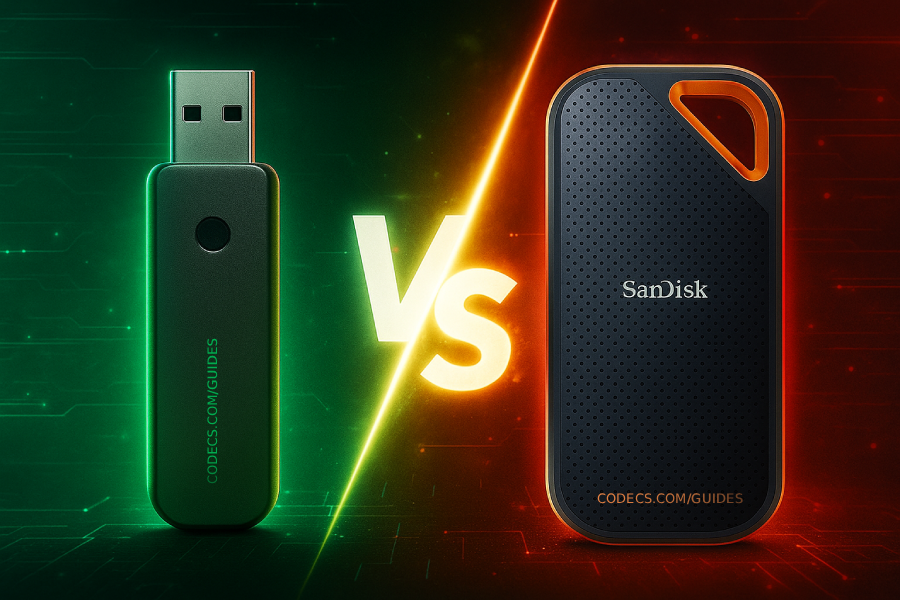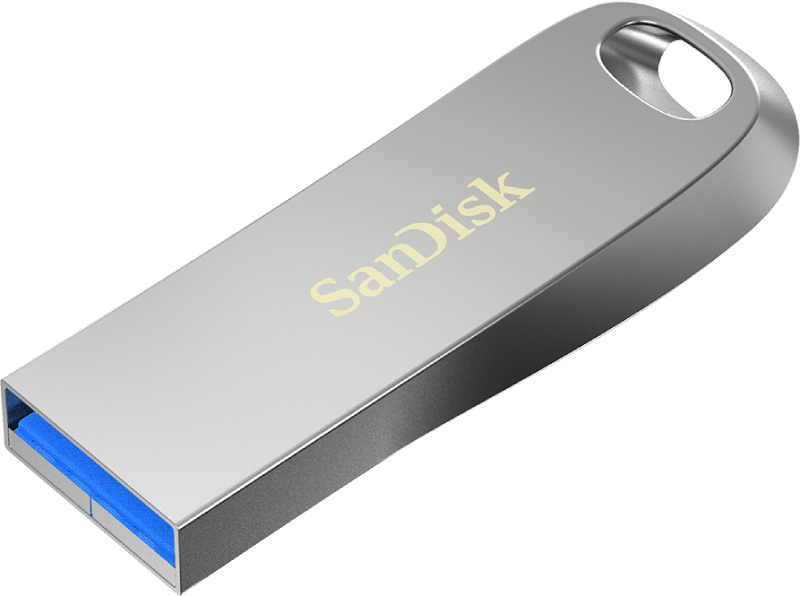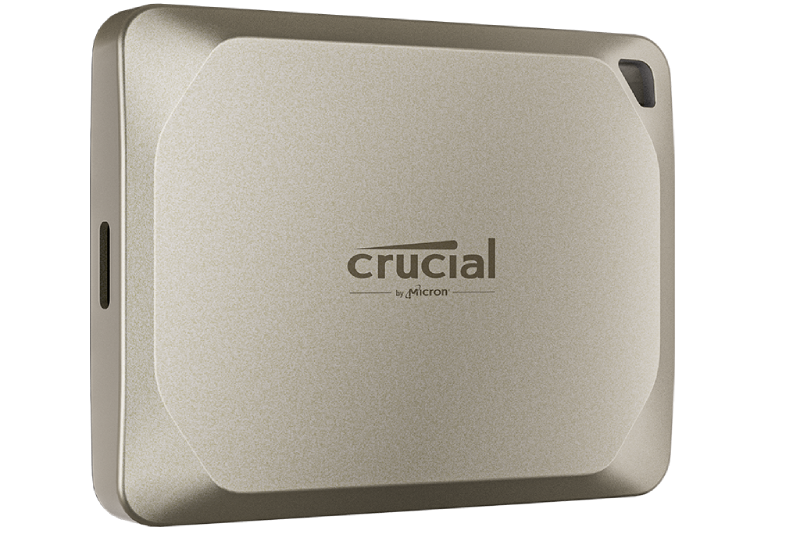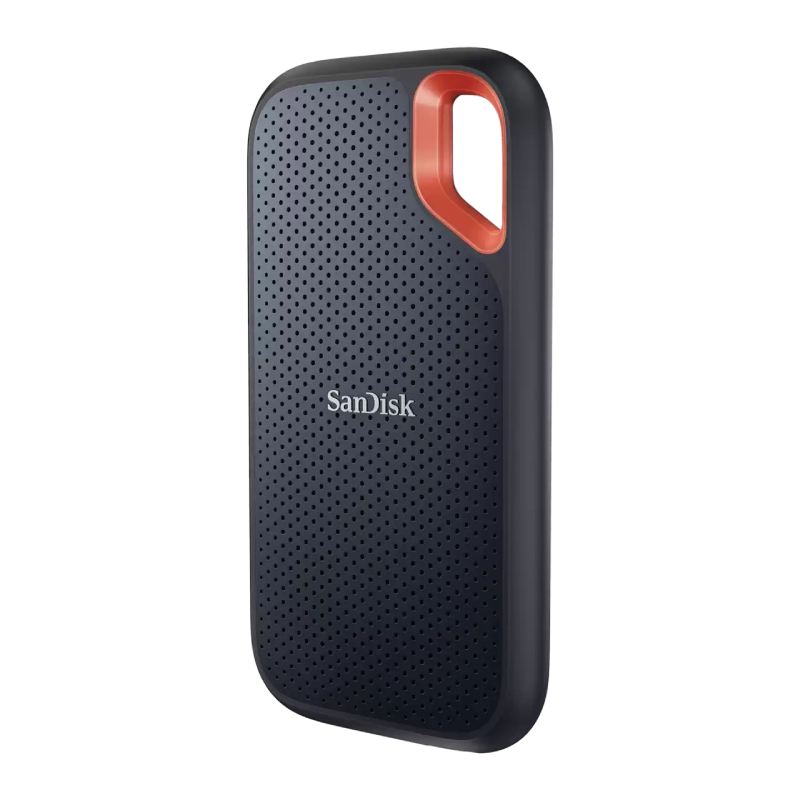Choosing between a USB stick and an SSD can feel overwhelming when both promise portable storage - but they serve very different purposes.
Whether you're transferring documents between computers or editing 4K video on the go, understanding the technical differences will save you money and frustration.
What's the Real Difference?
Both USB sticks and SSDs use flash memory to store data, but the similarities end there.
USB sticks typically use lower-grade NAND flash and less powerful controllers to reduce costs, while SSDs feature advanced controllers with sophisticated algorithms and higher-quality flash chips.
Think of it this way: a USB stick is like a bicycle - perfect for short trips - while an SSD is a sports car built for performance.
Download the Latest HDD, SSD, and USB Tools →
Speed: Where SSDs Dominate
USB flash drives typically deliver speeds ranging from 100MB/s to 400MB/s depending on the USB version they support.
Meanwhile, modern SSDs can reach speeds from 1,000MB/s up to 7,300MB/s with NVMe technology.
Real-world impact:
USB stick: Transferring a 50GB video file takes approximately 4-8 minutes.
SSD: The same transfer completes in under 30 seconds with an NVMe drive.
The performance gap comes from parallelism - SSDs use multiple flash chips accessed simultaneously with pipelined operations, while USB sticks typically rely on simpler single-chip designs.
Storage Capacity Showdown
USB Sticks:
- Common range: 32GB to 256GB.
- High-end models: Up to 1TB.
- Best for: Documents, presentations, small media files.
SSDs:
- Standard range: 500GB to 8TB for portable models.
- Enterprise options: Up to 61TB.
- Best for: Large media libraries, video editing, software development.
Durability and Lifespan
Both lack moving parts, making them resistant to shock and vibration, but SSDs feature advanced wear-leveling algorithms and better heat dissipation.
Professional SSDs can handle 500GB daily writes for over 6.5 years, while USB drives often degrade after 6 months of similar intensive use.
Heat management matters: SSDs can sustain temperatures around 70°C during demanding tasks, whereas USB drives begin throttling performance at 45°C, reducing speeds by up to 80%.
Price Per Gigabyte
2025 USB Stick vs SSD – Price Comparison
At higher capacities, SSDs often provide better value due to their superior technology and longevity.
| Storage | USB Stick (approx.) | SSD (approx.) |
|---|---|---|
| 128GB | $15–25 ($0.12–0.20/GB) | $25–35 ($0.20–0.27/GB) |
| 512GB | $45–70 ($0.09–0.14/GB) | $60–90 ($0.12–0.18/GB) |
| 1TB | $80–120 ($0.08–0.12/GB) | $90–140 ($0.09–0.14/GB) |
| 2TB | $150–250 (rare) | $130–200 ($0.07–0.10/GB) |
When to Choose a USB Stick
USB sticks excel in specific scenarios where their compact size and universal compatibility shine:
✓ Quick file transfers between computers in meetings or classrooms.
✓ Document storage (presentations, spreadsheets, PDFs under 10GB).
✓ Bootable recovery tools for system repairs.
✓ Firmware updates for routers, printers, or IoT devices.
✓ Promotional giveaways for marketing campaigns.
✓ Budget-conscious users needing under 256GB.
When to Choose an SSD
Portable SSDs have become essential for professionals demanding speed, reliability, and versatility - especially with the rise of 4K video editing, cloud gaming, and remote work.
✓ Video editing (4K/8K footage with immediate playback).
✓ Photography workflows (RAW files, Lightroom catalogs).
✓ Gaming libraries (Steam, Epic Games, console expansion).
✓ Software development (running Docker containers, virtual machines).
✓ Frequent large transfers (50GB+ files multiple times daily).
✓ System backups requiring fast restore times.
✓ Professional audio production (sample libraries, DAW projects).
Security Features
While USB sticks may offer basic password protection and hardware encryption on select models, SSDs typically provide more robust security including self-encrypting capabilities, secure erase functions, and compliance with various data protection standards.
For sensitive business data or confidential projects, SSDs offer enterprise-grade protection that basic USB sticks cannot match.
Compatibility Considerations
USB Sticks Win For:
- Older devices with USB-A ports only.
- Smart TVs and media players.
- Car audio systems.
- Devices requiring "removable media" detection.
SSDs Win For:
- Modern laptops with USB-C/Thunderbolt.
- Professional workstations.
- Gaming consoles (PS5, Xbox Series X).
- Video cameras with high-speed recording.
Most external NVMe SSDs exclusively use USB-C connectors, which are twist-proof and support faster transfer protocols.
The Verdict: Which Should You Buy?
Need maximum portability (keychain-sized).
Transfer files under 50GB occasionally.
Have a budget under $50.
Work primarily with documents and photos.
Need wide compatibility with older devices.
Work with large files (video, 3D models, databases).
Need speeds above 500MB/s.
Require storage over 512GB.
Value long-term durability.
Edit content directly on the external drive.
Hybrid approach: Many professionals keep both - a small USB stick for quick document transfers and an SSD for serious work.
This strategy costs around $100-150 total but covers all scenarios.
Top Recommendations for 2025
Best USB Stick Overall:
SanDisk Ultra Luxe USB 3.2 (64GB-1TB) – Up to 400MB/s, reliable performance, affordable.
Best Budget SSD:
Crucial X9 Pro (1TB) – Around $90, delivers 1,000MB/s transfers, excellent real-world performance.
Best High-Performance SSD:
SanDisk Extreme PRO Portable (1TB-4TB) – Up to 2,000MB/s, IP55 dust/water resistance.
Future-Proofing Your Purchase
Technology trends point toward USB4 v2.0 with speeds up to 80 Gbps and affordable 8TB SSDs under $200 by 2026.
If you're investing in storage today, prioritize USB 3.2 Gen 2 compatibility or higher to avoid obsolescence.
Storage technology is evolving rapidly, but your decision should focus on today's needs rather than hypothetical future requirements.
A $100 SSD that serves you well for three years beats waiting for next year's breakthrough while struggling with inadequate storage.
The USB stick vs SSD debate isn't about finding a winner - it's about matching the tool to the job.
USB sticks remain unbeatable for casual portability and universal compatibility, while SSDs have become indispensable for anyone serious about performance and working with substantial data.
Bottom line: If you're transferring PowerPoints and PDFs between meetings, save money with a quality USB stick.
If you're editing video, managing photo libraries, or running software that demands fast storage, invest in an SSD. Your workflow will thank you.
Key Takeaways:
- SSDs are 5-20x faster than USB sticks, crucial for large file workflows.
- USB sticks cost less upfront but SSDs offer better value at 1TB+.
- Choose USB sticks for portability and document transfers under 50GB.
- Choose SSDs for professional work, gaming, and files above 100GB.
- Consider owning both for maximum flexibility.







![Screenshot for How to Create a Bootable USB Recovery Drive for Windows 10/11 [2025] How to Create a Bootable USB Recovery Drive for Windows 10/11 [2025]](/thumb/250x150/0/guides/pictures/Create-Bootable-USB-Recovery-Drive.png)










How to Download HEVC Video Extension for Free
actually worked, made my day better icl
Read More →Best Player for Subtitles (2025 Guide)
@P.A. Blok You're right, thanks for the feedback! We've updated the guide to clarify that VLC does auto-detect ...
Read More →How to Play HEVC Files in VLC Media Player (2...
@VanguardLH You're right, it'll be corrected. Thanks for pointing it out!
Read More →